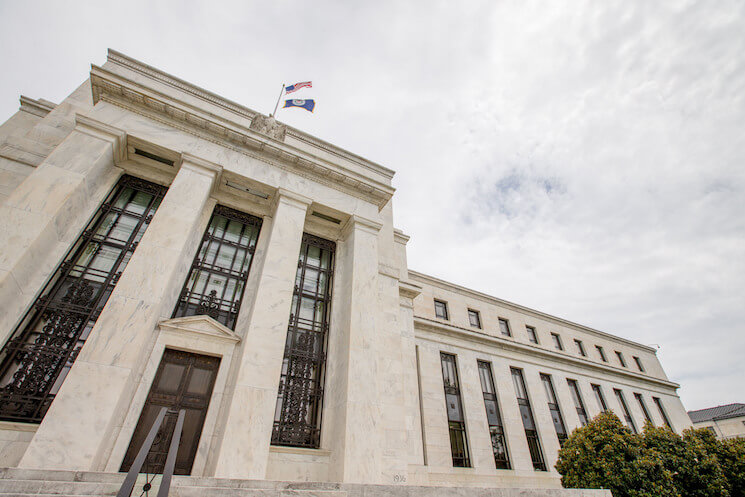What’s behind the decline in U.S. interest rates?

There are many ways to think about secular stagnation, but one particularly useful way is to look at the natural rate of interest. Secular stagnation can be thought of as the idea that the natural rate of interest, or the interest rate at which the economy is at full potential, is permanently negative. The long-term decline in interest rates across high-income countries poses significant problems for macroeconomic policy if the Federal Reserve and other central banks can’t push interest rates low enough to drive the economy to potential during a downturn.
What’s behind the decline in interest rates? And could the trend be reversed anytime soon?
A new paper by economists Gauti Eggertsson of Brown University, Neil Mehrotra of the Federal Reserve Bank of Minneapolis, and Jacob Robbins of Brown University takes a look at secular stagnation and the forces behind declining U.S. interest rates.
The majority of the paper presents a model of the macroeconomy that allows for the natural rate of interest to be negative for an extended period. New Keynesian models, the kind mostly preferred by central banks, don’t allow for such a possibility. So let’s be clear that the results about the forces behind the decline in the interest rates are dependent upon this model being an accurate map of reality.
Using their model, Eggertsson, Mehrotra, and Robbins decompose the roughly 4 percent decline in the natural rate of interest since 1970. These factors all affect either the supply of savings or the demand for loans. The changes in the supply and demand end up changing the price of savings and the price of loans—the interest rate. They find four large forces that have affected the natural rate during the 45-year period: three that pushed the rate down and one that pushed it upward.
The first two factors are related to demographics. First, the decline in mortality helped push down the natural rate by about 1.8 percentage points from its 1970 level. As life expectancy increased, according to the paper’s model, then individuals had to save more for retirement, thus increasing the supply of savings. An increase in supply, all things being equal, will decrease the price of a loan—the interest rate. The second factor, also related to demographics, is the declining fertility rate in the United States as there are fewer births per woman. Fewer children reduces the demand for loans, which in turn depresses the interest rate. The three economists peg the influence of declining fertility at a 1.8 percentage point decline.
The third large factor behind declining rates is the decline in productivity growth. The rate of productivity increases have fallen significantly since the early 1970s, though there have been short periods of higher growth in the late 1990s. With slower productivity growth, households expect that income growth will be lower in the future (because their wages reflect that lack of productivity growth) and therefore save more. Again, an increase in the supply of savings leads to a decline in the interest rate: 1.9 percentage points in this case.
The one force increasing the interest rate over time in the model is the increase in government debt. More government debt, measured as a share of GDP, increases the interest rate as more government borrowing increases the demand for loans. The increase in demand is large enough that it pushed up the interest rate by a bit more than 2 percentage points since 1970.
Two other factors contribute to the changes in the natural rate: the declining labor share of income (a decline of 0.5 percentage points) and the declining price of capital goods (a decline of 0.4 percentage points).
Could any of these trends be reversed in the near future to boost interest rates? The authors look at how some of these factors would have to change in order to get the natural rate of interest up from roughly -1.5 percent to 1 percent, but those changes seem highly unlikely. Total factor productivity growth would have to accelerate from 2.4 percent despite the fact that sustained productivity growth of more than 2 percent hasn’t been seen since the 1970s. The fertility rate would have to jump by about 1.4 births per woman and the government debt would have to go from 118 percent of GDP to 215 percent.
In other words: Secular stagnation might be around for quite a time to come.
